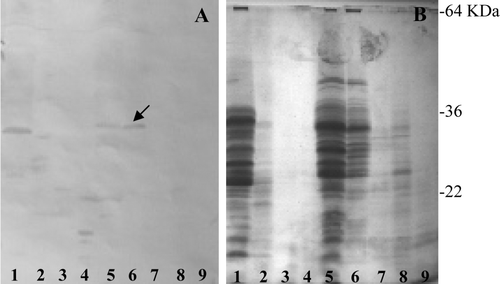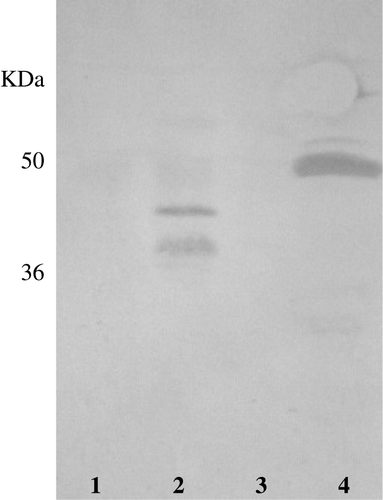Figures & data
Table 1 The main wheat (Triticum and Aegilops) species and their genome compositions.
Figure 1. (A) Fractionation of (A) gliadins by A-PAGE and (B) total proteins by SDS-PAGE in dicoccum landraces. (1–3) Prometeo and (4–12) Ersa 6. Gliadin biotypes c, d and e (A, lanes 1–3), and b (A, lanes 4–6) are shown.
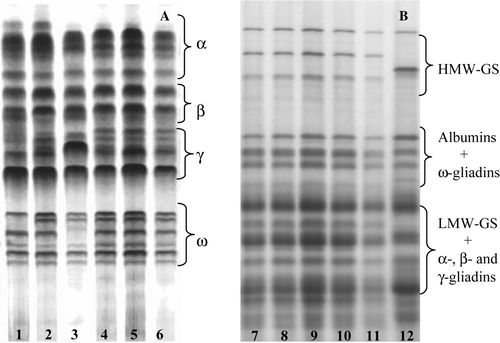
Table 2 Agglutination of K562(S) cells by PT-digested prolamins from different wheat species.
Table 3 Neutral red (NR) uptake, active caspases (AC) production, nitric oxide (NO) release and transepithelial electric resistance (TER) in Caco-2/TC7 cells treated with PT-digested prolamins from different wheat species.
Figure 2. Microscopic immunofluorescence images of Caco-2/TC7 cells incubated with ZO-1 antibody. (1) Untreated cells and cells exposed to prolamins from (2) spelt wheat, (3) dicoccum wheat Ersa 6 and (4) dicoccum wheat L5540.
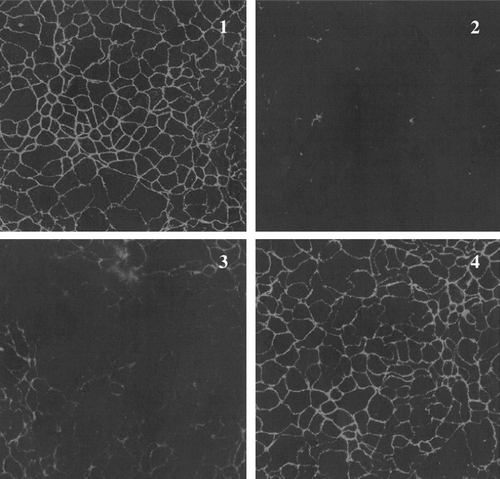
Figure 3. (A) SDS-PAGE patterns of (1–5) native and (6–10) PT-digested endosperm proteins, and (B) their reactions with anti-FPGQQQPFPPQQP (P31–43) antiserum. The dicoccum wheat landraces analysed are (1, 6) Leonessa 1; (2, 7) Leonessa 4; (3, 8) Leonessa 5; (4, 9) Ersa 6 and (5, 10) Ersa 8.
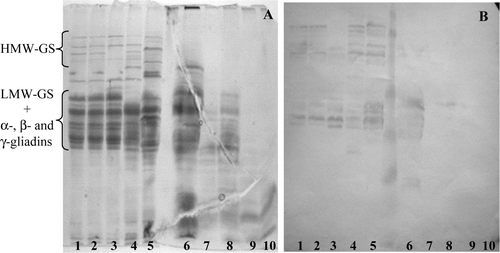
Figure 4. (A) SDS-PAGE patterns of (1, 2) PT-digested and (3, 4) native endosperm proteins and (B) their reactions with anti-QQPQDAVQPF antiserum. (1, 3) common wheat cv. FG; (2, 4) durum wheat cv Adamello.
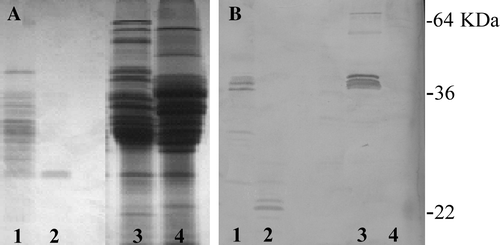
Figure 5. (A) Immunoblotting of anti-PP antiserum against (B) PT-digested prolamins fractionated by SDS-PAGE. The dicoccum wheat landraces are (1) L5563, (2) L5558, (3) L5540, (4) Filosini, (5) Prometeo, (6) Ersa 8, (7) Ersa 6, (8) Leonessa 5 and (9) Leonessa 4. Arrow indicates a band protein showing a weak immunoreaction.
